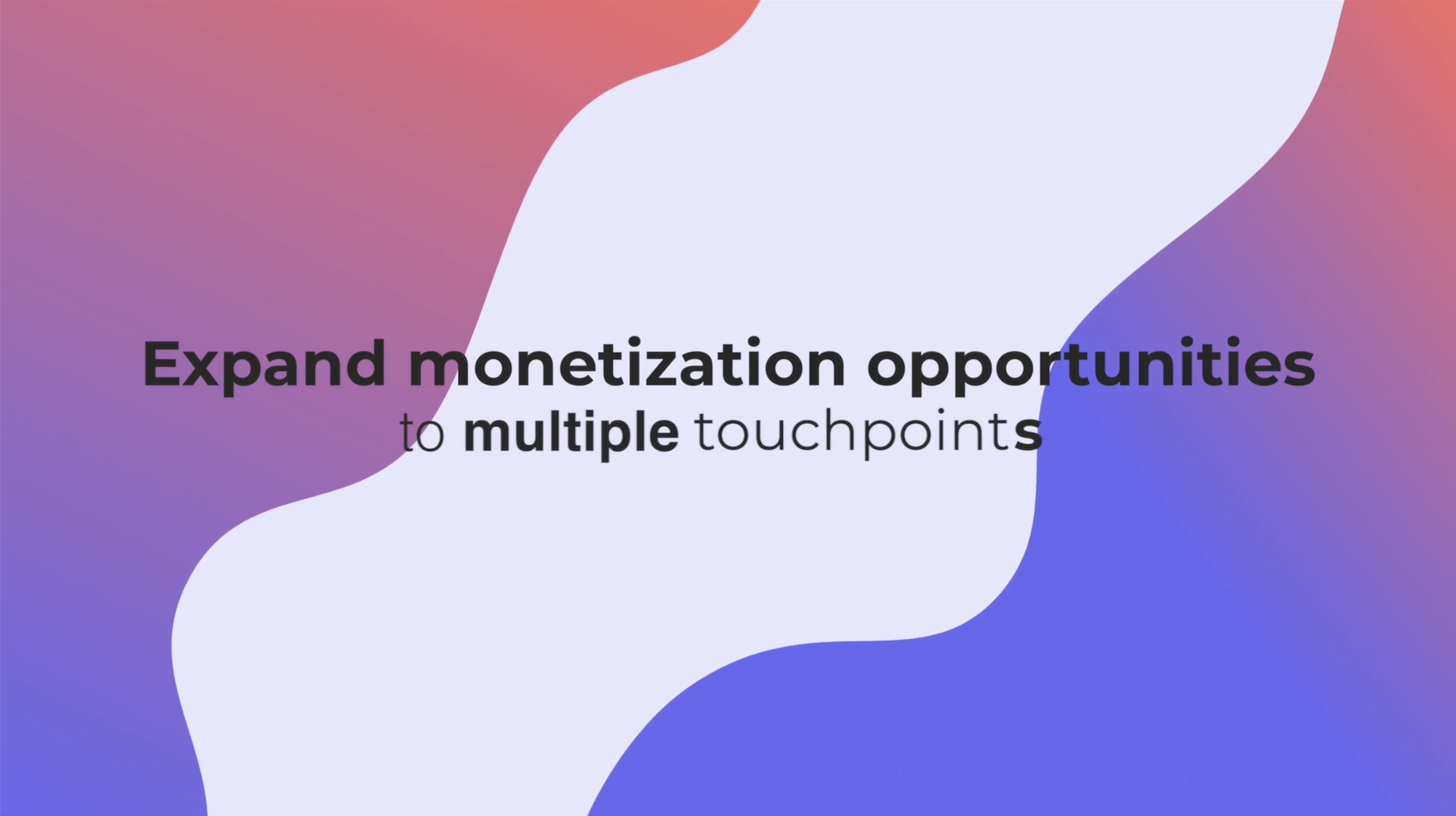Paywall placement optimization 101
21 November 2022
Marketing Automation Subscription User Journey AcquisitionThe most updated definition of paywall Placement and optimization knowhows
Get our latest resource
8 app onboarding flows defining 2026
We analyzed 8 top-performing apps — TikTok, Wise, Nike, Expedia, Fitbit, Strava, Pinterest, and Flo — to uncover the patterns shaping 2026’s best onboarding experiences.
This playbook reveals the patterns shaping next-gen onboarding — what works, why it works, and how you can apply it to your own experience.

Bomee Lafitte
Content Marketing Manager @ Purchasely
To help you implement the best placement optimization strategy, the article deep dives into
In its simplest definition, paywall placement is referred to as the location within the app a paywall will be shown. However, the term is not synonymous with mere display location.
In a nutshell, paywall placement is the process of choosing the right interaction points to display the right paywalls, which then brings experimentation into the equation.
The right point of interaction can refer to multiple things.
UI-based interaction points
Behavior-based interaction points
Rolling out high-value placements with the right paywalls across those places and timings can be perplexing with many procedural aspects to consider, such as
Experimentation is the most quantifiable way to identify the effectiveness of each paywall placement and any modifications you make to them. If your app has steady visitor traffic, you can certainly leverage A/B, A/B/n, or multivariate testing to improve in-app revenue via one or more of the following.
Experimenting with paywall placements involves the following tasks:
Grab any subscription app publisher and ask what the one most significant challenge for their business is. They'll tell you in a heartbeat that it's to keep up user engagement. Myriad factors impact user engagement, such as the app's content/product, price attractiveness, etc.
But optimizing paywall placement can play the most pivotal role when the effort pursues the "updated definition."
Here's why.
Paywalls have great potential to convert free users into paid subscribers who are 4 times more likely to be retained. By multiplying, personalizing, and optimizing paywall placements that deliver the right message and design at the right interaction points, apps can increase the chances of bringing more users closer to the conversion and retention moment (AKA “aha moment”).
Keep in mind that the aha moment can happen at any moment along the user journey, which can unfold in many different ways. Optimizing paywall placement, therefore, needs to be accompanied by an unceasing effort to map out those different sequences and drive timely, contextual engagements.
Paywalls are not a one-off transactional gateway. Rather, they are ongoing, hyperfocused conversations with app users where you can set aside an exclusive moment to
A well-positioned paywall placement delivered in context and tailored in real-time for the users' needs is sticky. Users like it, want to see more of it and make decisions on it.
As users interact with your paywall in many ways (favorable to your app's growth or not), you can gain insight into what factors about your paywall placements impact their behaviors which can help you further optimize the placement tactics. Imagine the ability to not just get the users onboard with the information you want to deliver but to learn about: at which moments users have higher subscription intent, which user segments respond more positively to paywalls, and how many paywalls are needed to nurture subscriptions.
Considering all apps are different from one another, there are no cookie-cutter placement tactics for catapulting revenue. But ultimately, creating successful paywall placements comes down to the 4 following optimization steps.
Customer expectations carry considerable weight. App users know what they want, and will get it wherever they can and needless to say, there are many options for that nowadays. To meet user expectations, apps must provide an intensely curated paywall experience, which can’t be done without getting close to user data - details of who they are, what their intention is at any particular moment and where, and how they have engaged within your app or/and paywalls. Your paywall placements must be crafted in ways that reflect those answers.
Let's put a shape to how challenging it is to grab users’ attention on paywalls - 68% of app users close a paywall in less than 10 seconds. (source: ‘Improving your subscription funnel’, App Promotion Summit SF 2022 - Session slides are available here)
On the other hand, personalization is a proven consumer engagement strategy - 80% of respondents indicated they are more likely to do business with a company if it offers personalized experiences, and 90% indicated that they find personalization appealing. (source: epsilon)
Once you have your hands on the user persona and attributes such as “woman under 25”, “based in the UK”, “free-trial ended”, or “app installed”, you should create not one, but multiple paywalls customized for each target audience and their maximum attention, to display them at every meaningful touchpoint of the user-to-subscriber journey.
Your paywall placement optimization doesn’t stop after putting a lot of blood and sweat into collecting user insight and crafting personalized paywalls. After all, you can have catchy and relevant paywalls, but if they are not in the right place, chances are your app users just won’t see them (literally and figuratively). Depending on which interaction point you choose to display your paywalls, you can either make or break the conversion and retention effort.
Try increasing the number of touchpoints, as it is directly linked to how many of your users are exposed to how many paywalls. Higher impressions lead to a bigger chance to maximize conversion and retention.
Always be testing. Identify the best working paywall variants and display locations through placement A/B testing. It is the final touch to best optimizing paywall placement that you can’t afford to avoid.
Each app will have different focus points to monitor based on their KPIs and business goals, but in general, you can expect the following benefits of testing your placements:
If your goal is to appeal to the widest audience possible, you need to get very specific and micro-focused about who it is you’re targeting and what they are in your app for. Every single one of them comes in with different backgrounds, needs, and habits, and insight into those individual differences can guide the delivery of a gratifying user experience that is tailored to each target cohort.
When are they likely to spend more attention on your paywalls? Which paywall design, messaging, and pricing resonate the best with your users? Answering these questions should not only be the foundation of your paywall placement optimization, but it also takes understanding your users and their understanding of the in-app journey.
Followings are the type of user knowledge you should equip yourself with.
is about user background information that is generally put into the database at installation or during onboarding. The type of information includes the followings.
is about the user experience that can be developed as users advance through the subscription funnel.
is about disseminating information users need to understand their contract with the app as a subscriber: benefits/return of investment, whether that is the app’s feature or expected outcomes (fitness or language learning apps), transactional process and requirements, subscription/cancellation options, offer details such as discount rate and period, etc. When sharing such information, apps need to maintain a balance between transparency, comprehensibility, and precision.
Just like brick-and-mortar stores frequently change their shop windows, subscription apps need to frequently improve, modify or make over their paywall screens if the goal is to entice the users deeper into the subscription funnel.
Today, with countless apps racing toward grabbing and keeping customers’ attention, people are learning to ignore advertisements or any sales/marketing appeals for that matter. The phenomenon called “ad blindness”, often referred to in the advertising world, mainly happens due to the lack of visibility, which can be increased by improving the following aspects.
As illustrated by an eye-tracking study conducted by Nielsen Norman Group back in 2018, users tend to ignore places where ads are usually placed. That could include (in the context of in-app paywalls) a “Premium” button on the top of the main screen or a random popup triggered at an irrelevant time which could come off as obnoxious. Try impressing users by displaying paywalls with a personalized message right at multiple touchpoints where they are the most appreciated.
You can increase the visibility of paywalls by making them useful for users. Instead of using paywalls as a mere transactional gateway or a marketing pitch, turn them into a sought-after venue where your users can arm themselves with transparent information about the subscription journey and the options they have.
While creative visualization attracts attention, it may not be enough to increase recognition. Instead, paywall designs and messages that are relevant to each user’s needs and habits can nurture stronger recognition. Apps should consider the paywall experience as an integral part of each user’s personalized in-app journey, and not as a superficial sales pitch.
Try to increase users' attention on paywalls by utilizing and experimenting with diverse content formats. Content formats like testimonial slides, videos, quizzes, timers, special day promos, progress indicators, and so on are great for making sure viewers stay longer on your paywall screens. Customization is key, too. Avoid using cookie-cutter approaches and customize your content format according to your own users' needs and preferences.
Check out our eBook - Top 10 paywall design tips, to learn more about what to apply in your paywall design strategy.
After you launch your placements, keep an eye on each placement's performance. It's essential to look at how your placements perform against the metrics and KPIs you set in the first step of the optimization process.
If your placements perform well early on, it may make sense to continue, increase, or extend the display. If the result is the opposite, you can adjust accordingly, whether that means tweaking the design, shortening the duration of the display, or adjusting the location.
Want to start optimizing paywall placements like a pro? Talk with one of our growth experts today!
21 November 2022
Marketing Automation Subscription User Journey AcquisitionThe most updated definition of paywall Placement and optimization knowhows

Bomee Lafitte
Content Marketing Manager @ Purchasely
15 September 2022
Marketing Automation Subscription User Journey Podcast Paywall A/B TestingAndy Carvell from Phiture focuses on paywall practice recommendations for the entire subscription journey and 4 escalating levels of subscriber...

Bomee Lafitte
Content Marketing Manager @ Purchasely
1 July 2022
Marketing Automation Subscription Retention User JourneyIn-App Subscription Revenue Maximization using Purchasely + OneSignal

Bomee Lafitte
Content Marketing Manager @ Purchasely